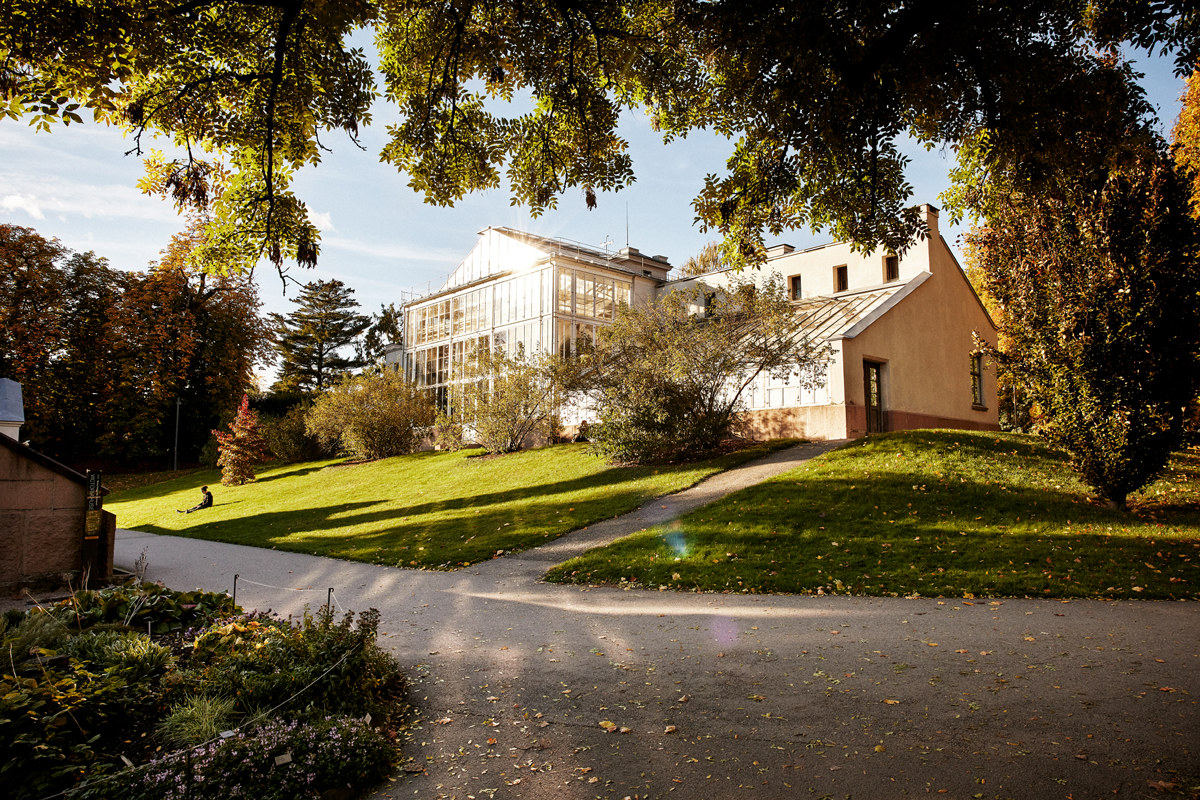
The Palm House opened in 1868 and has three rooms.
The center room is a living exhibit of the evolution of plants through millions of years. There are several cycads, ancient seed plants which were abundant on Earth before flowering plants evolved. You can also see a Wollemia nobilis, a conifer long thought to be extinct, but found alive and well in an Australian national park in 1994. A 50 million year old red sandstone from Svalbard with fossilized leaves is also on display. The leaves are remarkably similar to those found on today’s deciduous trees.
The room to the right is the Mediterranean room. Among many other interesting plants, you may find camellias and orange trees in full bloom in the middle of winter.
The room to the left contains cacti and other succulent plants from many parts of the world. The climate here is always dry, but may be cold at night and very hot in the afternoons.
The Palm House is too low for palms. But it once housed one famous palm, which grew here from 1815 to 2000. It was known as “Smith’s Palm”, grown from a seed collected on the Canary Islands by the Garden’s first director Christen Smith. It eventually grew so tall that several emergency measures were taken to make room for it, including raising the roof. Smith’s Palm was well known and a major attraction in the Garden until it died.



